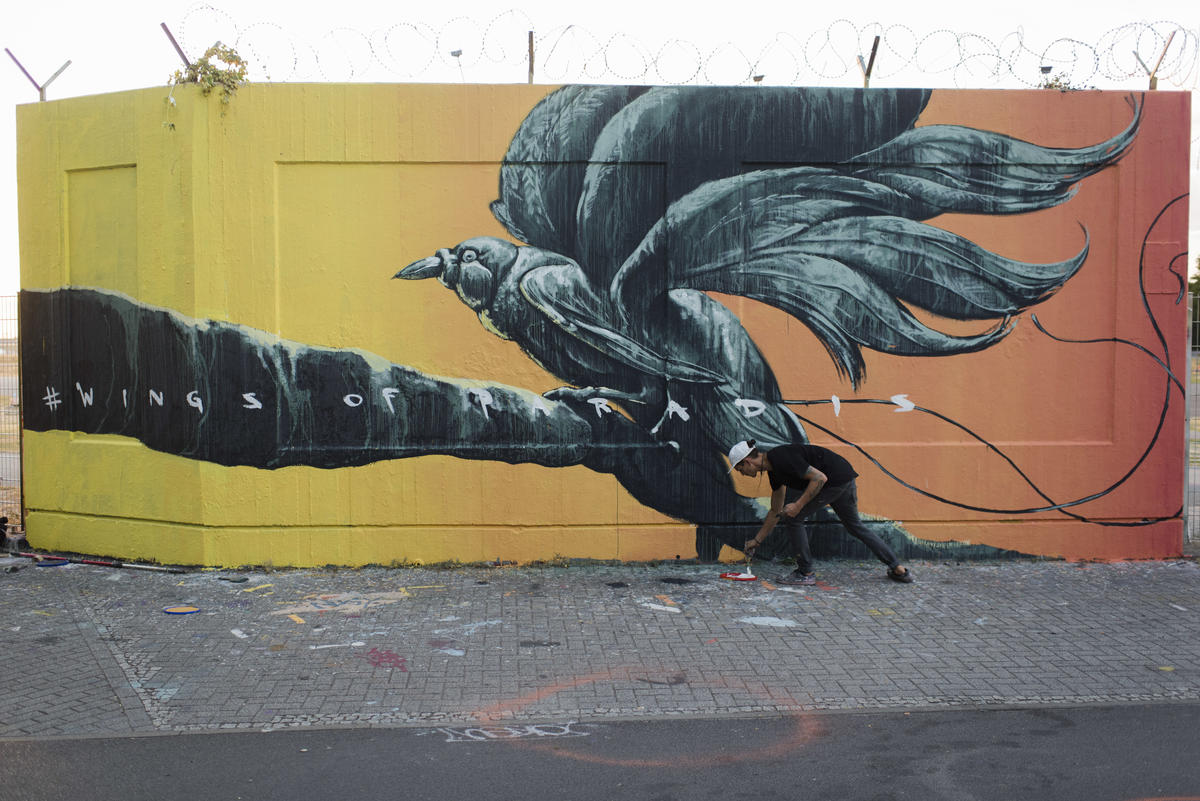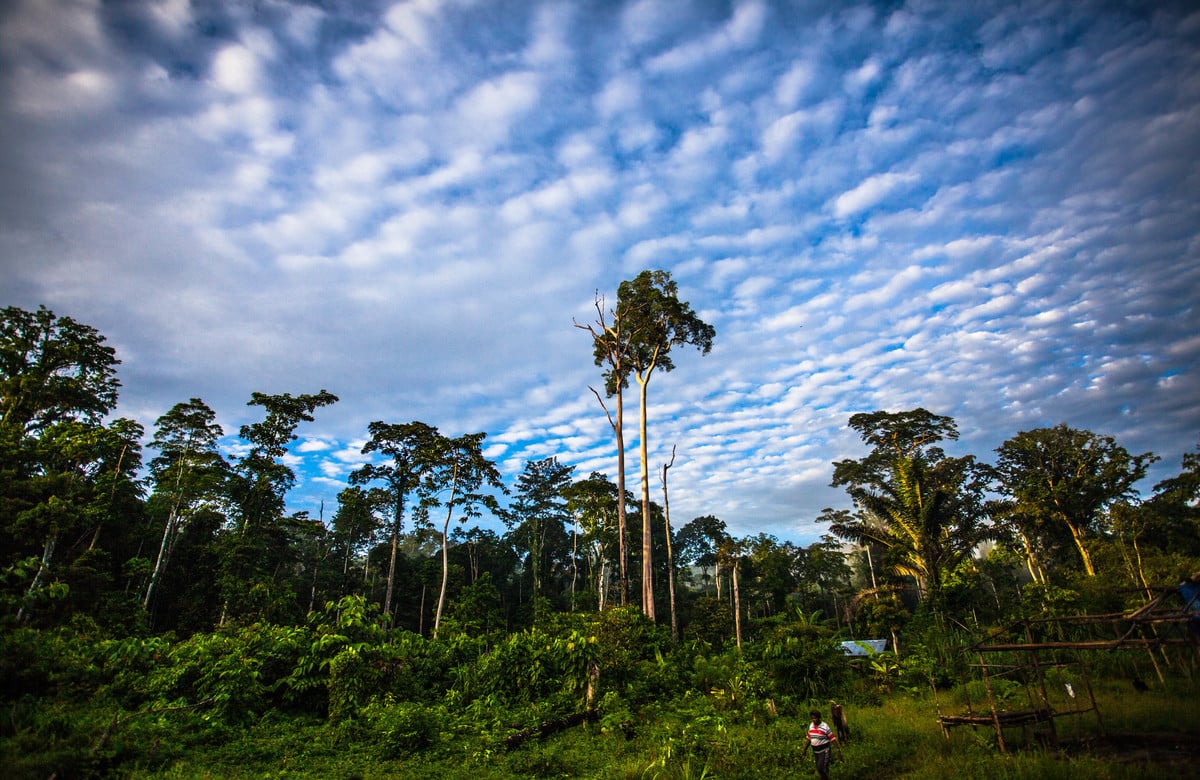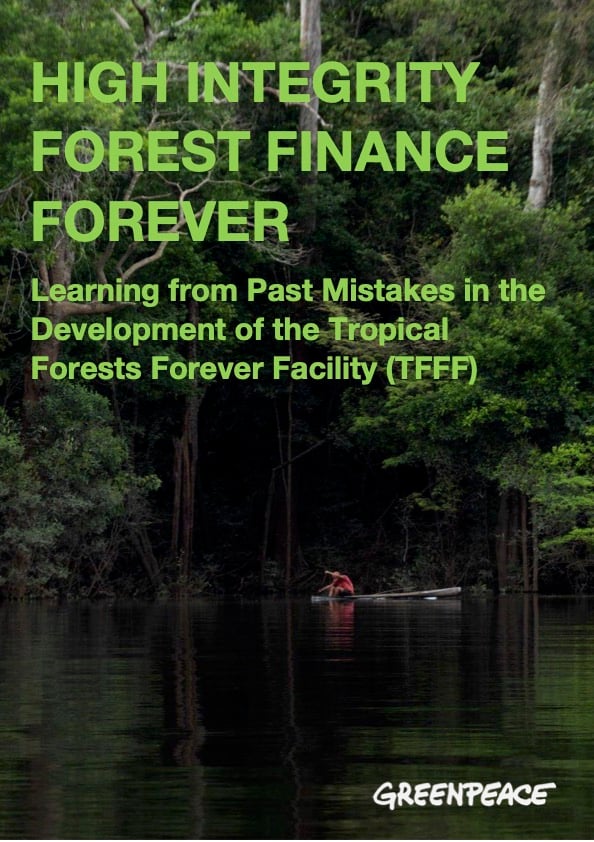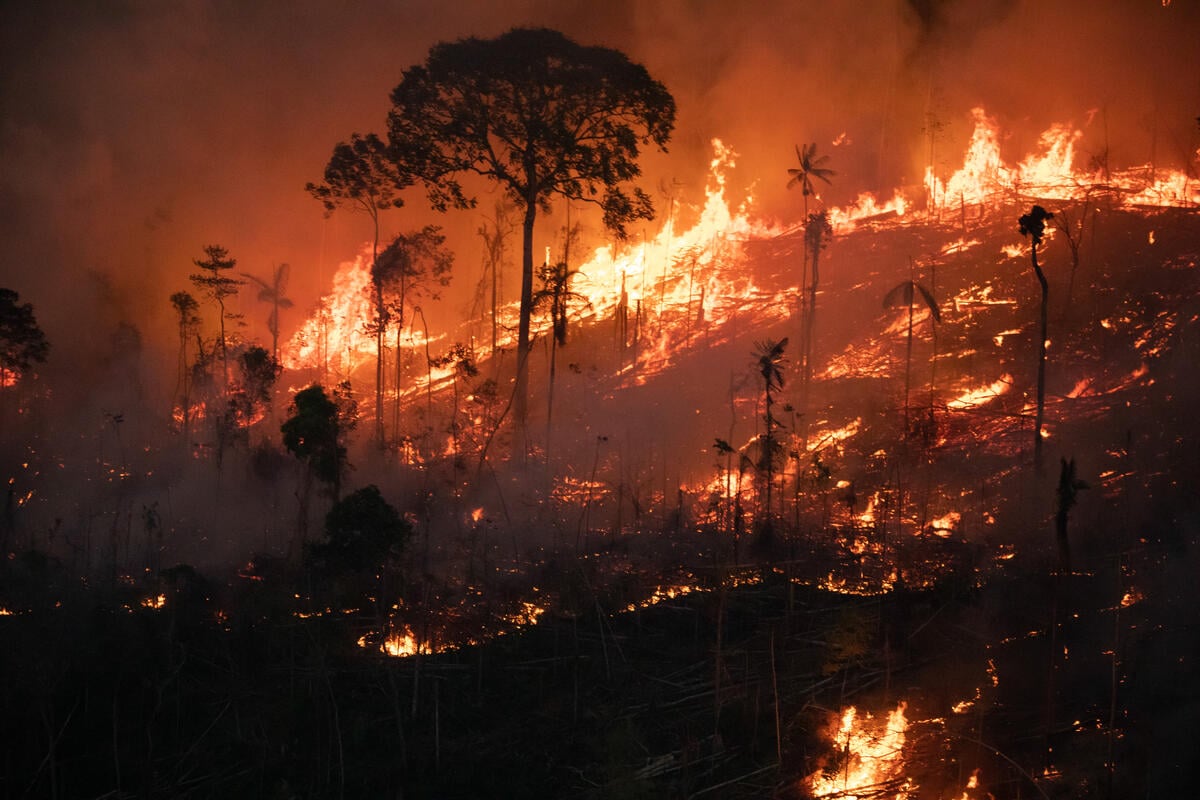
Artist Sokar Uno creates a mural of a bird of paradise in Berlin as part of the Wings of Paradise campaign, drawing attention to the beauty and vulnerability of the forests of West Papua.
Jakarta, Indonesia – From Jakarta to London, New York to Istanbul, artists have made city walls their canvas to draw attention to rainforest destruction for palm oil in Indonesia and Papua New Guinea.
The Wings of Paradise project has spread 20 giant murals in 20 cities worldwide [1] [see here for full collection] as part of a Greenpeace campaign calling for global brands to protect rainforests, its biodiversity and communities and stop buying palm oil from forest destroyers. The huge murals, many larger than 25 square metres, include a towering painting in central Taipei.
Inspired by ancient temples of Southeast Asia, Artist Hui Ling LEE worked with 30 volunteers to bring a 106 square meters mural in to the streets of Kuala Lumpur, said:
“The Wings of Paradise murals are hopefully a starting point for an open dialogue through creative art-activism. From Malaysia we wanted to tell the story of deforestation and the struggle of the Papuan communities. We hope our art will raise awareness and inspire action to protect the rainforests of Papua and its rich biodiversity, at the same time we highlight the beauty and diversity of co-creation.”
Annisa Rahmawati, Senior Forest Campaigner, Greenpeace Southeast Asia, said:
“Forests are the lungs of the planet and our strongest defense against climate change. For over two decades now, the palm oil industry and the global household brands that buy from them, keep turning their backs on forests conservation. From forsaken corners of these cities to large central walls, activist-artists across the world painted these murals as a powerful message to companies: stop deforestation now.”
Bonsai, mural artist in Geelong, Australia, said:
“My piece depicts the Ribbon Tailed Astrapia species, set in a forest landscape that is being destroyed. I feel strongly about what is taken from our planet and put into our supermarkets with little thought, consideration or education on its impact. Many people approached me during the installation of the piece and were intrigued as to why I was painting a bird of paradise, which lead to a conversation about products that use palm oil bought from rainforest destroyers. A conversation that I hope will continue.”
For centuries, the forests of New Guinea – the second largest island on earth – have been protected by thick forest cover. But as the palm oil industry expands its operations, this fragile ecosystem is endangered, risking the homes of unique species like the birds of paradise. There are 41 known species of the birds of paradise and 37 of them live in the New Guinea region.
Ricky Lee Gordon, who brought a new mural on a Cambodia Town wall in Long Beach, California said:
“I have chosen to paint a local Indonesian woman watching over a burning forest being scorched by deforestation and two birds of paradise flying for safety. I want to show that the problem not only affects us locally, but globally too.”
Illustrator and author Matt Sewell landed his mural in London’s famous street-art hub of Shoreditch. It shows a large Goldies birds of paradise taking flight away from a bulldozer and forest fires with smaller images of the King of Saxony and Riflebird species in the remaining trees.
In describing his art, Sewell said:
“I paint birds everyday, from the mundane to the magical. Getting the chance to paint birds of paradise and help raise awareness of their habitat loss from the palm oil giants means so much for me. If I can help spread the word for these amazing birds in the slightest way then that is a dream come true. The world would be a much sadder place without our birds of paradise.”
Groups of volunteers around the world have also placed a variety of the birds of paradise designed by Sewell in the form of street-art cardboard pop-up and even creating their own murals to amplify the impression of the displacement of the birds from their rainforest home.
Greenpeace is calling on big brands such as Nestlé, Unilever and Mondelez to keep a commitment they made 10 years ago and end deforestation for palm oil in their supply chain by 2020.
ENDS
Videos and photos can be found here and here
For the full collection see here
For all artist statements and locations with mural images see the exhibition guide
Notes:
[1] The murals have appeared in the following cities: Bangkok, Thailand, Berlin, Germany, Bondy & Vitry (near Paris), France, Breda, Netherlands, Cancun, Mexico, Geelong, Australia, Istanbul, Turkey, Jakarta, Indonesia, Kuala Lumpur, Malaysia, London, UK, Los Angeles, USA, Mendoza, Argentina, New York, USA, Oakland, USA, Prague, Czech Republic, Santiago de Chile, Chile, Taipei, Taiwan, Tokyo, Japan, Vienna, Austria, Wellington, New Zealand.
Contacts
Greenpeace International Press Desk, +31 (0)20 718 2470 (available 24 hours), [email protected]
Sol Gosetti, International Communications Coordinator, Indonesia Forest campaign, [email protected], +44 (0) 7380845754



